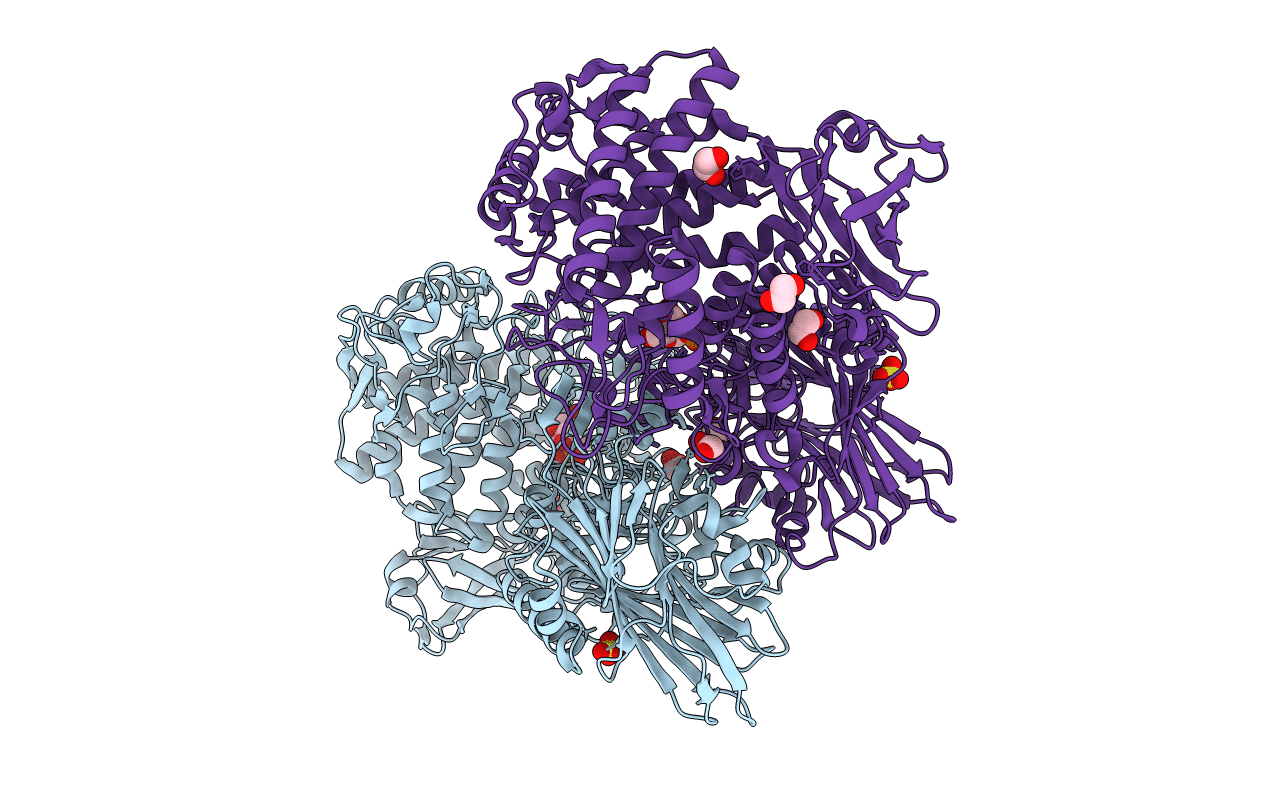
Deposition Date
2018-05-04
Release Date
2018-06-13
Last Version Date
2024-01-17
Entry Detail
PDB ID:
6GH2
Keywords:
Title:
Paenibacillus sp. YM1 laminaribiose phosphorylase with alpha-glc-1-phosphate bound
Biological Source:
Source Organism:
Paenibacillus sp. YM1 (Taxon ID: 856729)
Host Organism:
Method Details:
Experimental Method:
Resolution:
2.50 Å
R-Value Free:
0.21
R-Value Work:
0.17
R-Value Observed:
0.18
Space Group:
P 41 21 2


